Intracoastal Waterway - Day 9
/Stuck in Swansboro
Day 9 – 206 nm to go
With a forecast of gale force winds offshore and high winds and rainy weather inland, we decided we'd take a day off and stay put in our pleasant little anchorage just off Swansboro Village. Launching the dinghy would have been akin to flying a kite, so we happily stayed aboard for the day. Thanks to nearby Caspers Marina, we enjoyed free wifi all day. Though we didn't get into the village at all, we think it's probably a hopping place as the music went on both nights we were anchored here till well into the wee hours of the morning.
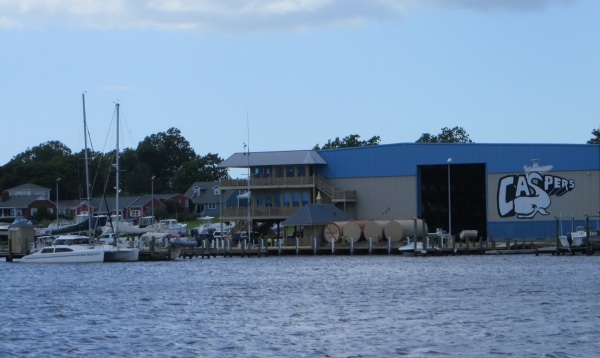
As it turned out, the day was sunny, but blustery. Not a drop of rain fell, but the wind howled. With good internet, we spent the day writing, catching up on articles and blogs, photo editing, doing some minor chores and just hanging out. It's quite pleasant to just “be” in a place some days with no agenda.
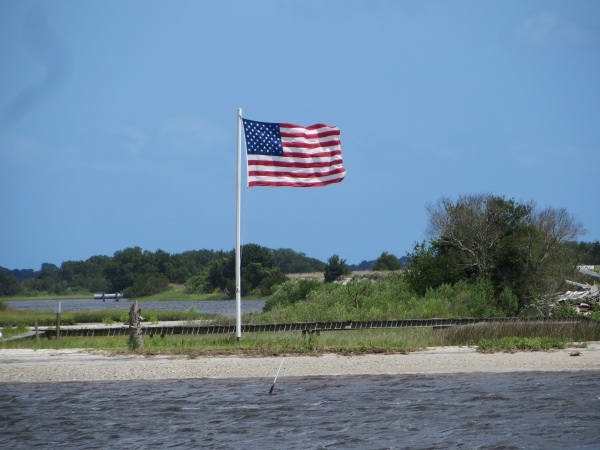
This is probably a good day to talk about what we've learned … and re-learned/remembered … while traveling on the ICW. Granted, our previous experience on the ICW has been extremely limited, but usual navigation skills and rules of the road apply, as well as boating etiquette. It's just that when we're at sea, we don't have the opportunity to use some of these skills much, so this has been a welcome refresher course for us.
Something new we learned … all ICW navigation markers are marked with a either a yellow rectangle (for green markers) or a yellow triangle (for red markers), so at a waterway intersection, sailors always know which direction the ICW is going. Clever, huh?
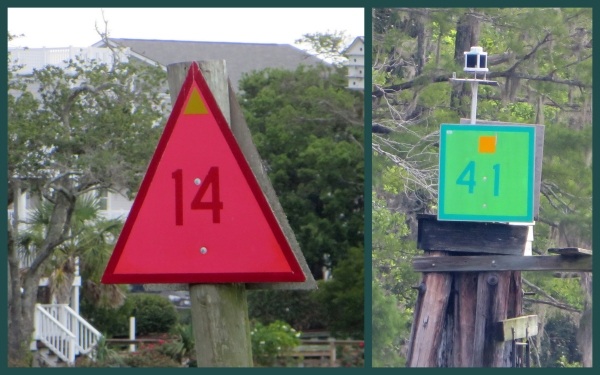
Something we remembered … there are still lots of courteous cruisers out there. Larger motor vessels will hail their intentions to pass us and give us a “slow pass” to minimize their wake as they're going by. If motor vessels are going too fast, especially in no-wake zones in towns, the local marine police stop and ticket them.
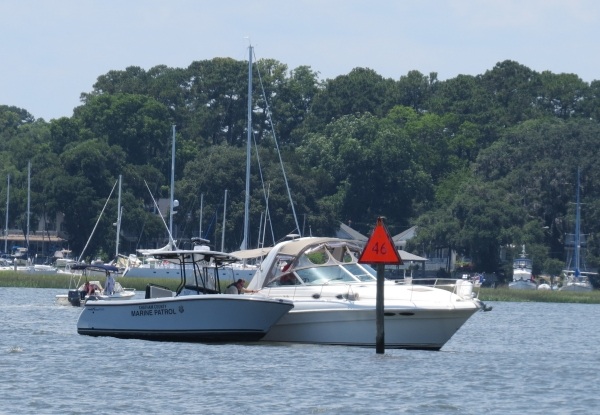
Something we're remembering/relearning … the timing for negotiating transit through opening bridges. We don't pass under or through bridges very frequently on ocean passages. How long does it take the bridge keeper to stop traffic, ring his bell and siren and activate the bridge opening. And then, just how long does it take the bascule leaves to raise or the swing bridge to swing? How does passing under a fixed bridge affect the control of the boat? There is usually a loss of wind, then a gust on the other side and then there's the current and numerous little eddies to contend with. We were a bit rusty, but with ~70 bridges to transit during this passage, we got it figured out once again. Bridge tenders, by the way, have been courteous, friendly and efficient which has been most appreciated.
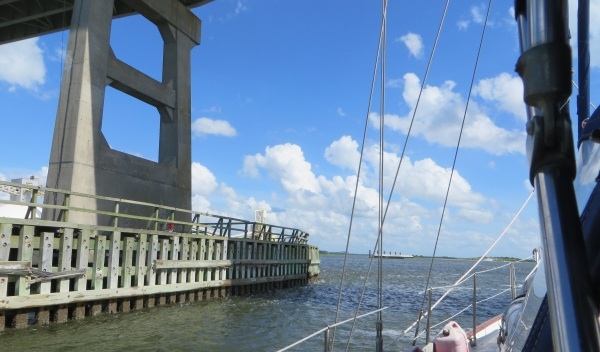
Something we forgot … when out of the USA, we rarely have help with lines or docking and tipping is not the usual protocol, nor expected ... even in restaurants. So to the young man at Osprey Marina who was so helpful and accommodating … we didn't mean to stiff you on your tip, we really did forget.
Something I noted … taking pictures from a moving boat is pretty tricky. Taking pictures of moving things from a moving boat … pretty marginal results. That's my story and I'm sticking to it.

















